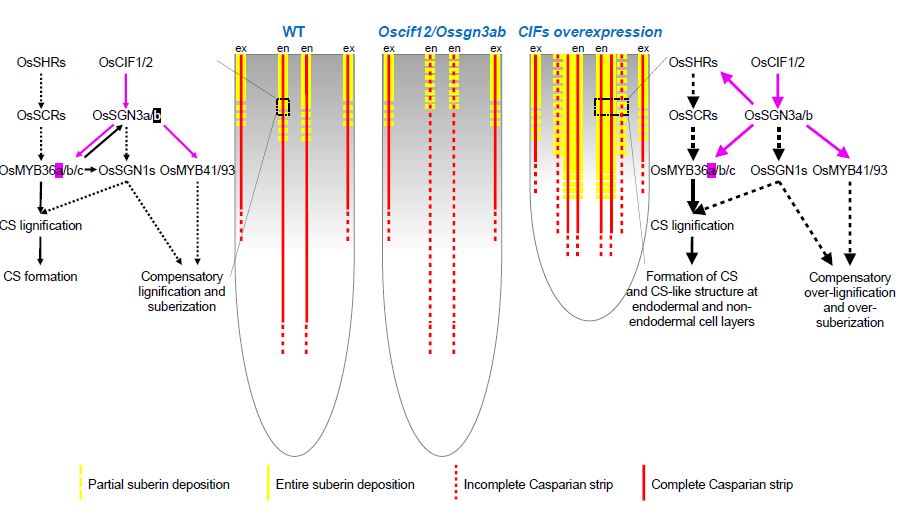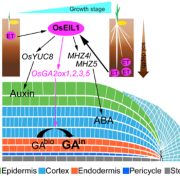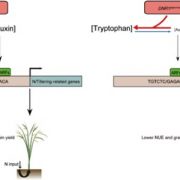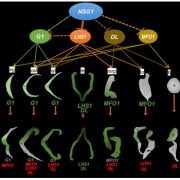Casparian strip formation at root endodermal and non-endodermal cell layers in rice
Zhang et al. investigate the role of the OsCIF1/2–OsSGN3a/b signaling pathway in Casparian strip formation in rice.
https://doi.org/10.1093/plcell/koad269
By Jixing Xia, of Life Science and Technology, Guangxi University, China.
Background: The Casparian strip (CS) is a belt-like lignin-based structure in the anticlinal cell wall encircling neighboring endodermal cells that seals the extracellular space in vascular plants. The CS is an important barrier regulating selective nutrient uptake and ion homeostasis. In Arabidopsis, the stele-expressed peptides CS INTEGRITY FACTOR1 and 2 (AtCIF1/2) mediate the formation and maintenance of a complete CS by activating their co-receptor SGN3 expressed in the endodermis. SHORTROOT (AtSHR) is another key regulator of CS formation at the endodermis. The presence of the AtCIF-AtSHR combination is sufficient to build a functional CS in a non-endodermal cell layer. However, little is known about the molecular mechanism of CIF-mediated CS formation at root endodermal and non-endodermal cell layers in rice.
Question: Is the role of the CIF1/2–SGN3 pathway in endodermal CS formation conserved between rice and Arabidopsis? Which regulators induce functional CS formation at non-endodermal cell layers in rice?
Findings: Knockout of all three OsCIFs or both OsSGN3s resulted in a discontinuous CS and a marked reduction in compensatory lignification and suberization at the endodermis, suggesting that the OsCIF1/2–OsSGN3a/b signaling pathway plays a conserved role as a CS integrity control system in rice. Ectopic overexpression of OsCIF1 or OsCIF2 alone was sufficient to activate or enhance the expression of CS-associated genes and induce CS formation at single or double cell layers adjacent to the endodermis in rice roots. Furthermore, ectopic co-overexpression of OsCIF1 and OsSHR1 induced the formation of more CS-like structures at multiple cell layers in the cortex. The induction of CS-like structures at double or multiple cell layers was not observed in transgenic Arabidopsis plants ectopically expressing AtCIFs or AtCIFs and AtSHR, indicating that OsCIF1 and OsCIF2 have a distinct ability to induce ectopic CS formation compared to AtCIFs.

Model of OsCIF1/2-mediated CS formation at the endodermis and non-endodermal cell layers.
Next steps: We will functionally characterize the downstream genes modulated by the OsCIF1/2–OsSGN3a/b signaling pathway, which may help to comprehensively dissect the molecular mechanisms of CS formation at endodermis and non-endodermis cells in rice.
Reference:
Baolei Zhang, Boning Xin, Xiaoqian Sun, Dong Chao, Huawei Zheng, Liyun Peng, Xingxiang Chen, Lin Zhang, Jinyu Yu, Dan Ma, Jixing Xia. (2023). Small peptide signaling via OsCIF1/2 mediates Casparian strip formation at the root endodermal and non-endodermal cell layers in rice. https://doi.org/10.1093/plcell/koad269









